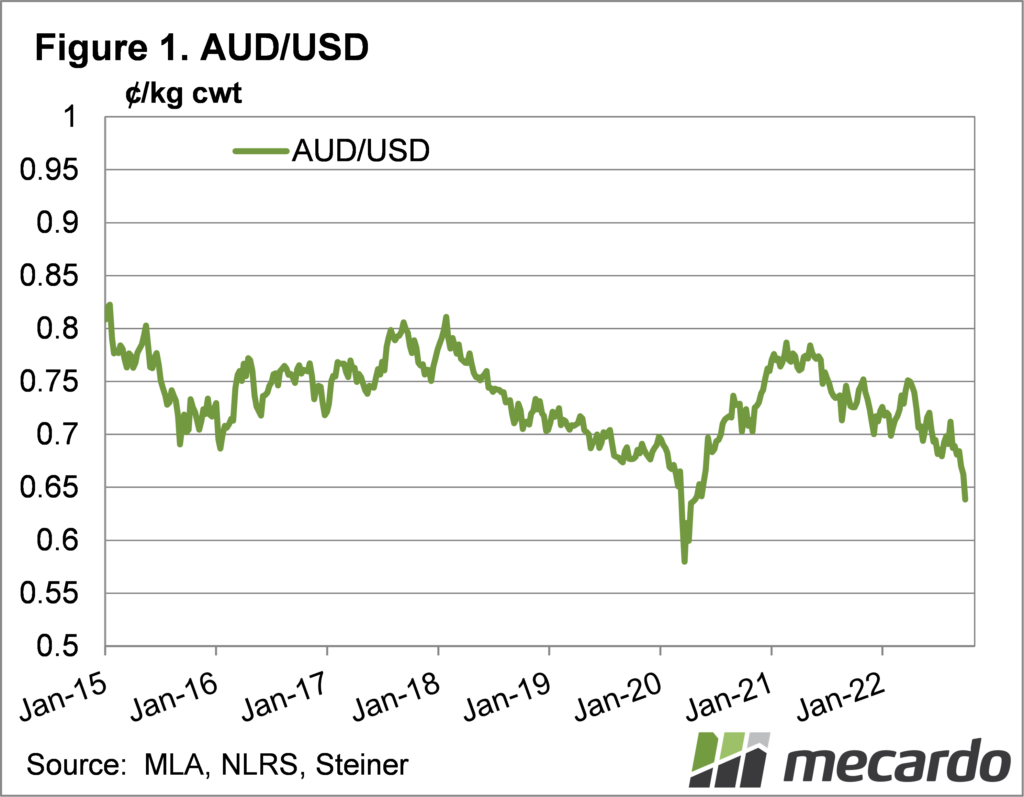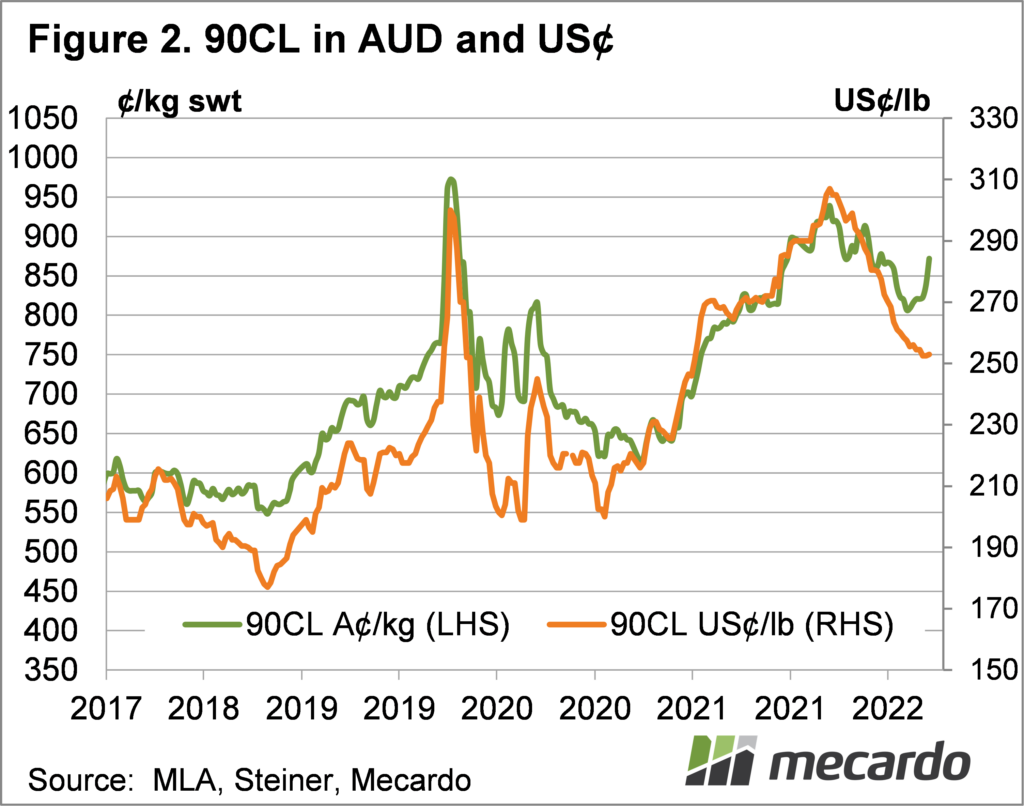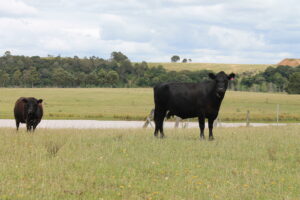Financial markets are in another tizz over inflation, amongst other things, and while this is not good for super funds and share portfolios, it has seen the Aussie dollar crash, which is good for exporters. Cattle producers are both importers and exporters, here we take a high level look at how a lower AUD might impact prices of inputs and outputs.
Figure 1 shows the Australian dollar (AUD) has steadily declined since June last year. Having started the 2021-22 financial year at 77US¢, it reached 68¢ a fortnight ago. This week the AUD has taken a further hit by 7%, moving under 64US¢ for the first time since May 2020.
The fall in the AUD has been driven by a number of factors, including rising interest rates in the US (even more so than here) and a move out of riskier assets into the US dollar. A falling AUD makes imports more expensive, and our exports more competitive, especially when the US is a major customer and competitor in that market.
On the input front, falls in the AUD are directly related to the cost of importing fertiliser. With fertiliser priced in US dollars the price landed here is generally calculated as the US price, divided by the exchange rate. For example, if fertilizer is $US1000/t free on board overseas, two weeks ago it cost $1,470/t in our terms, this week it is $1562/t.
Grain prices generally see a similar direct increase from the falling Aussie dollar, as our grain become cheaper relative to US values. This sees buyers come to Australia, pushing up the price.
For cattle the shifting Aussie dollar has a slower impact, as it has to flow through a few markets. Figure 2 shows how the shifting AUD moves the 90CL Frozen Cow indicator in our terms, relative to the US price upon which it is based.
The last month has seen the 90CL in US terms fall 1.2%, while in our terms it has risen 7%. Regular readers will know that the 90CL Frozen Cow indicator is used as a benchmark for beef exports. The rise in export beef prices should flow through to finished cattle markets while supplies are tight.
For young cattle the rise in grain prices which comes from the lower AUD takes some of the shine off the price support. Lotfeeders are big buyers of young cattle, and while finished cattle prices will find support, input costs in terms of grain will limit how much more they can pay for feeders.
What does it mean?
In general, a falling AUD will see finished cattle prices appreciate faster than young cattle prices. This will make taking cattle to heavier weights on grass more attractive, as will the rising cost of grain.
The lower AUD will put more pressure on input and machinery costs, which have already rallied strongly over the last couple of years. In general though, when seasons are good, a lower AUD improves terms of trade for cattle producers.
Have any questions or comments?
Key Points
- The Australian dollar has crashed to a 2 year low this week due to financial market turmoil.
- A lower AUD makes our beef more competitive, but increases input costs.
- In general, a lower AUD improves terms of trade for cattle producers.
Click on figure to expand
Click on figure to expand
Data sources: MLA, RBA














